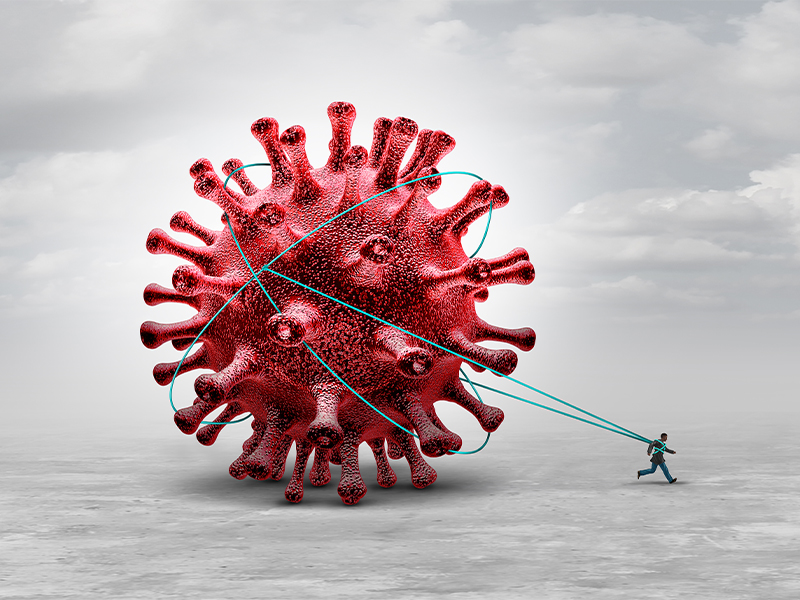DR SRIRAM NARAYANAN, a senior consultant vascular and endovascular surgeon at the Harley Street Heart and Vascular Centre, shares his view of how fatigue, brain fog and palpitations might be symptoms of “long COVID” – and the role that our circulation system plays.

Lingering effects
Lockdowns, closed borders, digital proofs of vaccinations and boosters, and the fear of the unknown may be behind us now, but some physical effects may remain. We were fortunate here in Singapore. Our national resources, so prudently built over the years, the speed and efficiency of our response, and our community spirit all meant that our island nation managed the pandemic better than most.
Yet every so often, a new wave and another variant make the news. The new FLiRT variants, descendants of the Omicron strain and interestingly named after the specific amino acid mutations (phenylalanine, leucine, arginine and tryptophan) in the spike protein – are on the rise worldwide. Not considered more transmissible or any more serious than existing circulating variants, these are nevertheless a reminder to us all to stay vigilant in our daily lives. After all, the persistent effects of exposure to the virus at the peak of the pandemic are still being felt by many. Enter long COVID.
What exactly is long COVID and what are the symptoms?
The term describes a wide range of new, returning or ongoing health problems that people experience after being infected with the virus that causes COVID-19. Most recover within a few days to a few weeks after infection, but some symptoms can persist for many weeks or even months. These long COVID symptoms can include fatigue that interferes with daily life, reduced exercise tolerance, a fast-beating or pounding heart (palpitations), difficulty thinking or concentrating (brain fog), dizziness when standing, muscle pain, changes in menstrual cycles, and many more.
Anyone can be at risk. While research continues into the mechanisms that lead to long COVID, some features seem consistent. There is a lingering inflammation of the inner lining of the arteries and veins, a condition called endothelialitis. These inflamed vessels tend to clot more easily, affecting blood circulation to the muscles and organs. Those with pre-existing circulatory diseases like atherosclerosis (cholesterol blockages), diabetes, and varicose veins are especially at risk. However, even previously healthy and young individuals may develop long COVID. As air travel resumes, frequent flyers should be more aware of their risks of deep vein thrombosis – clots forming in the leg veins that can break off into the heart and lungs.

Keep your circulation system in check
There is no single test to diagnose long COVID; a combination of symptoms such as fatigue, brain fog, exercise limitation and breathlessness should prompt an examination of the circulation system at The Harley Street Heart and Vascular Centre. Careful assessment for cholesterol plaques, clot formation, compromise in lung function and persistent inflammation, combined with these symptoms, serves to guide treatment.
There is also no single treatment. Screening for circulatory problems, treating cholesterol levels and clotting risks with greater diligence, supervised vascular exercise rehabilitation, and careful monitoring of individuals to identify this new disease early are necessary. After all, your circulation is your lifeline.
The Harley Street Heart and Vascular Centre (Gleneagles Hospital)
#02-38/41 Annexe Block, 6A Napier Road
6472 0503 | WhatsApp 8822 8164
harleystreet.sg/vascular
This article first appeared in the July 2024 edition of Expat Living. You can purchase the latest issue or subscribe so you never miss a copy!
To make the most of living in Singapore, read our latest City Guide here for free!
Don't miss out on the latest events, news and
competitions by signing up to our newsletter!
By signing up, you'll receive our weekly newsletter and offers which you can update or unsubscribe to anytime.



